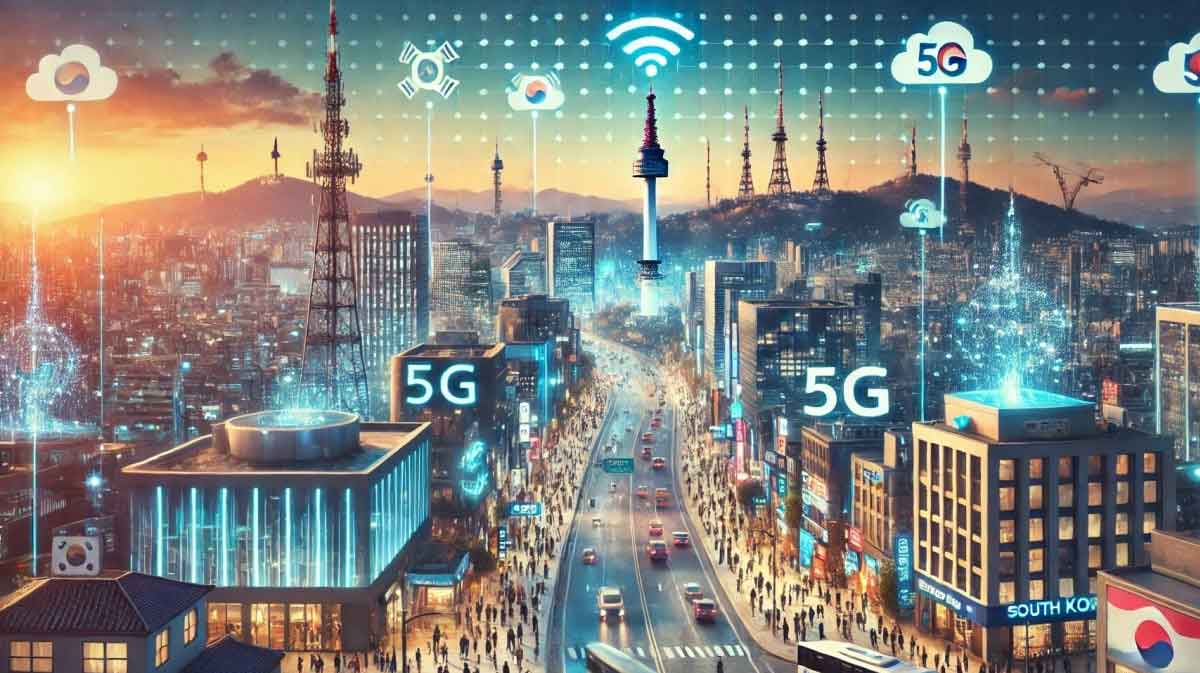South Korea’s remarkable transformation from a war-torn, low-income nation into a technological and economic powerhouse offers valuable lessons for developing countries. The country’s “Miracle on the Han River” was achieved through a unique combination of cultural values, government policies, and a decentralized approach to technological innovation. This article explores how South Korea’s cultural dynamics, emphasis on education, and regional tech hubs have fostered economic growth and sustainable technological development, and how these insights can be applied in developing nations.
Background and Motivation: Why South Korea?
South Korea’s developmental journey provides a relevant case study for countries facing similar obstacles, such as limited resources, economic stagnation, and historical challenges from colonization. By examining South Korea’s successes in cultural and technological development, policymakers in developing nations can gain insight into strategies that support balanced growth across regions, avoid overcrowding in capital cities, and stimulate economic diversity.
Key Lessons from South Korea’s Development Path
South Korea’s approach combined both cultural and economic strategies. This article highlights three phases in the nation’s transformation: industrialization, the knowledge economy transition, and the cultural-technological boom. Each phase reveals the importance of a holistic strategy that incorporates education, regional investment, and an embrace of cultural identity.
Industrialization and Export-Led Growth (1960s-1980s):
South Korea’s journey began with government-led efforts to promote industrialization, focusing on heavy industries and manufacturing. Large family-owned conglomerates, known as chaebols, were instrumental in driving economic growth. By the late 1980s, the country had established itself as a leader in electronics, automotive, and shipbuilding.
Transition to a Knowledge Economy (1990s):
South Korea emphasized education and research, laying the groundwork for a knowledge-based economy. This shift fostered advancements in information and communication technology (ICT), preparing the country to excel in global digital markets.
Cultural-Technological Boom (2000s-present):
South Korea’s rise as a cultural icon, known as the Korean Wave or Hallyu, had a profound economic impact. K-pop, K-dramas, and films contributed to both cultural influence and financial growth, with the entertainment and tech industries intertwined in innovative ways. This cultural influence expanded into gaming, fashion, and consumer electronics, building global brands and fostering an environment of creativity and innovation.
The Role of Cultural Dynamics in Innovation
Confucian Values in Modern Development
Traditional Confucian values emphasizing collectivism, hierarchy, and education have significantly influenced South Korea’s development. These values contributed to a highly educated, skilled workforce that underpinned technological advancements. Respect for hierarchy and cooperation fostered efficiency within companies and across industries, allowing rapid decision-making and cohesive organizational culture.
With over 70% of young adults holding higher education degrees (OECD, 2021), South Korea boasts one of the highest rates of education attainment globally. This focus on education has created a strong foundation for innovation and an entrepreneurial spirit, equipping South Korean citizens to engage in emerging tech sectors and drive economic progress.
Blending Tradition and Modernity
South Korea has managed to blend traditional values with a modern cultural movement, with the Korean Wave representing the country’s evolving identity on the global stage. The rise of K-pop and K-dramas has generated substantial revenue while fostering an openness to creativity and innovation in industries beyond entertainment. South Korea’s experience shows that cultural movements can support economic growth, suggesting that developing countries could similarly embrace and invest in cultural industries to stimulate local economies.
Decentralized Tech Hubs for Balanced Growth
Primary and Secondary Tech Hubs
South Korea’s emphasis on decentralized development alleviates congestion in Seoul while promoting growth in secondary cities like Daejeon, Gwangju, and Daegu. By investing in these areas, the government has ensured that technological advancement and economic development are not confined to the capital but spread across regions, creating a more balanced economy.
In Daejeon, for example, the government established Daedeok Innopolis, a prominent R&D hub that hosts over 1,000 institutions, including universities, research centers, and startups. This hub has driven innovation in areas like ICT and green technologies. Similarly, Gwangju specializes in renewable energy, and Daegu focuses on medical technologies. This strategy has allowed secondary cities to become leaders in specific fields, contributing to economic diversification.
Strategic Investment in Regional Growth
The South Korean government has encouraged businesses to expand into secondary cities by offering tax incentives, funding infrastructure, and supporting R&D initiatives. Each hub has its unique specialization, enabling South Korea to diversify its economy and prevent over-reliance on any single sector. This approach also ensures that the benefits of technological advancement are more widely distributed, avoiding the social and economic disparities that can arise from over-concentration of development in urban centers.
Lessons for Developing Nations
Developing nations can draw on South Korea’s experience by investing in secondary cities and fostering regional tech hubs with specific specializations. Decentralization can relieve pressure on capital cities, reduce urban congestion, and create balanced growth across regions. Specializing in niche technologies can allow countries to develop competitive expertise, supporting both local and national economies.
Cultural and Technological Synergy: The Path to Inclusive Development
Collaborative Culture as an Asset
South Korea’s culture of collectivism has played a crucial role in the success of regional tech hubs. In places like Daedeok Innopolis, a culture of collaboration among universities, research institutions, and private enterprises has driven innovation and entrepreneurship. By working together, these entities have achieved breakthroughs in key sectors, demonstrating the potential for regional cities to contribute meaningfully to national growth.
The Synergistic Effect of Cultural Values and Decentralization
The interplay between cultural dynamics and decentralized tech hubs has fostered an inclusive innovation ecosystem in South Korea. This synergy ensures that advancements are not limited to metropolitan areas but benefit communities across the country, promoting a more balanced and sustainable economic growth model. Developing nations can consider this synergistic approach, where cultural values enhance collaboration and innovation in decentralized settings, as a model for inclusive growth.
Challenges and Considerations for Developing Nations
While South Korea’s strategies offer valuable insights, they may require adaptation to suit different cultural and infrastructural contexts. Developing nations may face several challenges:
Policy Implementation and Infrastructure: Developing countries often lack the infrastructure and policy frameworks needed to support regional tech hubs. Tailored policies that consider local resources and economic conditions are essential for successful adoption.
Skilled Workforce Development: A well-educated workforce is critical for regional tech hubs. Countries may need to prioritize investments in education and skills training to prepare citizens for high-tech industries.
Cultural and Social Adaptations: Each country has its own cultural landscape, which may differ from South Korea’s. Developing nations must assess which aspects of their cultural identity can support innovation and entrepreneurship while promoting inclusivity.
Recommendations and Conclusion
Adapting South Korea’s Model to Local Contexts
For successful implementation, developing nations should invest in education, infrastructure, and policies that encourage businesses to expand into secondary cities. Governments can also promote cultural industries to foster creativity, innovation, and economic growth. Tailoring these strategies to local contexts is essential to ensure that they meet the unique needs of each nation.
Final Thoughts: A Blueprint for Balanced Development
South Korea’s success demonstrates the potential of combining cultural strengths with strategic investments in regional innovation. By creating an inclusive innovation ecosystem, South Korea has achieved balanced economic growth and sustained technological progress. Developing nations can adopt elements of this model, focusing on regional development and cultural assets to promote sustainable, inclusive growth that benefits all regions and communities.
(With inputs from agencies)





